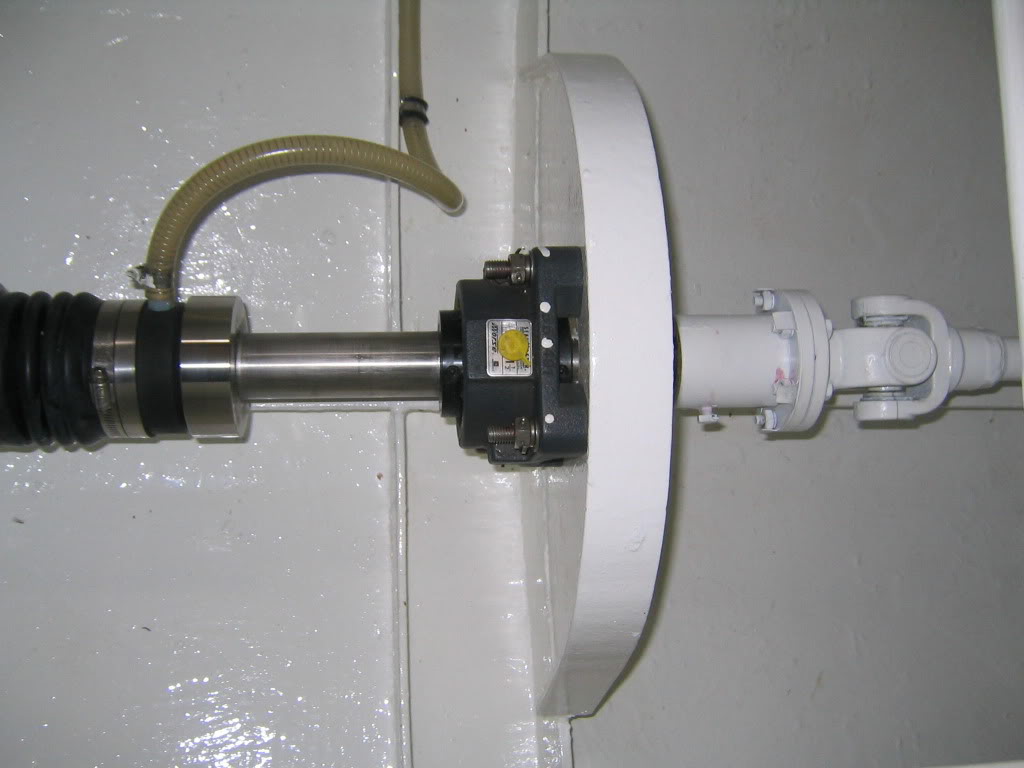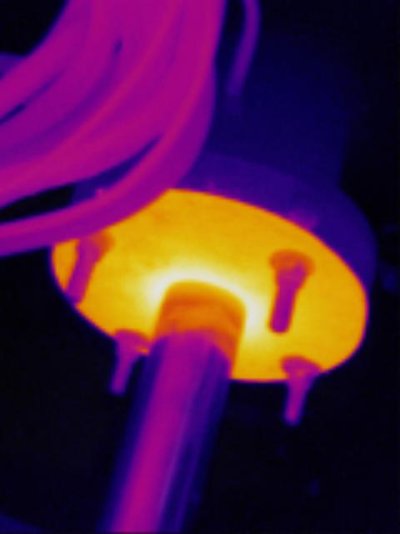A locked prop has far less drag than a freewheeling prop.
From CaptTom: But, would the BW Velvet be damaged by freewheeling? If so I'd probably want to have a strategy in mind to lock the shaft if I ever had to get home on 1 engine.
FF--- According to MIT, that is an urban myth. An MIT study circulated years ago on the Grand Banks owners and other forums showed definitively that a freewheeling, fixed-blade prop creates significantly less turbulence-- which is drag--- than a locked prop. I no longer have a copy of the study so I don't have the numbers anymore. But whatever they were, they proved conclusively that a locked, fixed-bladed propeller creates not just a little bit, but a lot more drag than the same propeller allowed to freewheel.
So it was interesting to read the report Rick posted and see this confirmed--- that a locked prop produces over three times as much drag as the same prop allowed to freewheel.
To me, this is just common sense and logic. When we have had to bring the boat home on one engine, which requires us to lock the non-powered shaft off, we know that locked-off prop is producing a hell of a lot of turbulence which means drag, by a) the buffeting against the rudder which is clearly felt at helm (we have cable-chain steering so anything the rudder does or feels is felt at the helm-- hydraulic steering does not have this feedback) and b) simply standing on the aft deck looking at the water behind the boat the turbulence coming off the locked prop is clearly visible.
CaptTom--- Regarding freewheeling the BW Velvet Drive marine gear, if you read the operator's manual it states that the Velvet Drive can be freewheeled at slow speeds. Unfortunately instead of giving an actual speed figure they simply define slow speeds as "trolling or sailing speed."
In talking to our diesel shop, which also does or vends out transmission work, the speed figure they gave us was three or four knots.
However.... since our boat has shaft logs that are lubed and cooled by water fed to them from each engine's raw water system, we have to lock off our shafts if their associated engine is not running and thus pumping water to them even thought the VD marine gears themselves can be freewheeled.
The reason is that the unlubed/cooled shaft log and shaft will get incredibly hot in a very short time. I know this because we did it on the delivery cruise of our boat from Tacoma to Bellingham. At the very end of the trip we had to shut the port engine down due to a leaking coolant pump. We called the diesel shop and given the short distance remaining they said bring it in with the shaft freewheeling, just go slow and monitor the shaft log temperature. While we did not overheat the log and shaft, I was amazed at how hot they got even at four knots or so in a very few minutes. It was obvious that freewheeling the prop at any speed at all for a longer period of time would most likely severely damage the log and bearings and possibly the shaft, too. Hence the heavy-duty tie-off system I fabricated in the engine room.
It has been suggested here that one could create a hose and valve system by which the running engine could send water to both shaft logs and thus leave the un-powered shaft to freewheel thus causing less drag on the boat. I thought of and discussed this years ago with the diesel shop we use, right after we got the boat, actually, and experienced what I just described.
The consensus of the shop guys was that while one could easily do this, the water flow to the logs from our FL120s raw water cooling systems is not much. Pretty small hose, picked off from one end of the main heat exchanger. It's fine for feeding to one log--- ours run dead cold with no drips--- but they felt that splitting this feed-- and there would be no way to know if the feed was being evenly split between the logs-- could deprive BOTH logs of sufficient cooling and lube water so they would both run hot. So they did not recommend it. However, they said that on systems with a higher flow to the logs it could certainly work.
We have since replaced the stock FL120 raw water pumps and drives with new pumps with a significantly higher flow rate. However the issue of the small hoses to the shaft logs and where they get their feeds remains. The system could be re-designed,probably, to send more water from each engine to its log and thus accommodate a split in the feed.
However an engine shutdown is a very rare occurrence. We've had to do it four times in the last 14-plus years, which is a lot in my opinion. But one case was the leaking coolant pump on the delivery trip so who knows how long that problem had been brewing. Another was totally my fault during a fuel transfer when I allowed an engine to get a big slug of air that stopped it and rather than take the time to bleed the system in the rough-ish water we were in we elected to tie off the shaft and come home on one. The other two were restrictions in the raw water hull intake, one a growth that had started before we bought the boat and the other a slowly increasing blockage on the external screen from barnacles.
The point is that given the normally very rare requirement for a precautionary engine shut-down, it's way easier to simply tie off the shaft than go through the exercise of redesigning and fabricating the water feed system to the shaft logs. For our engines, anyway. With different engines and a different shaft log cooling system, it may be pretty easy.


